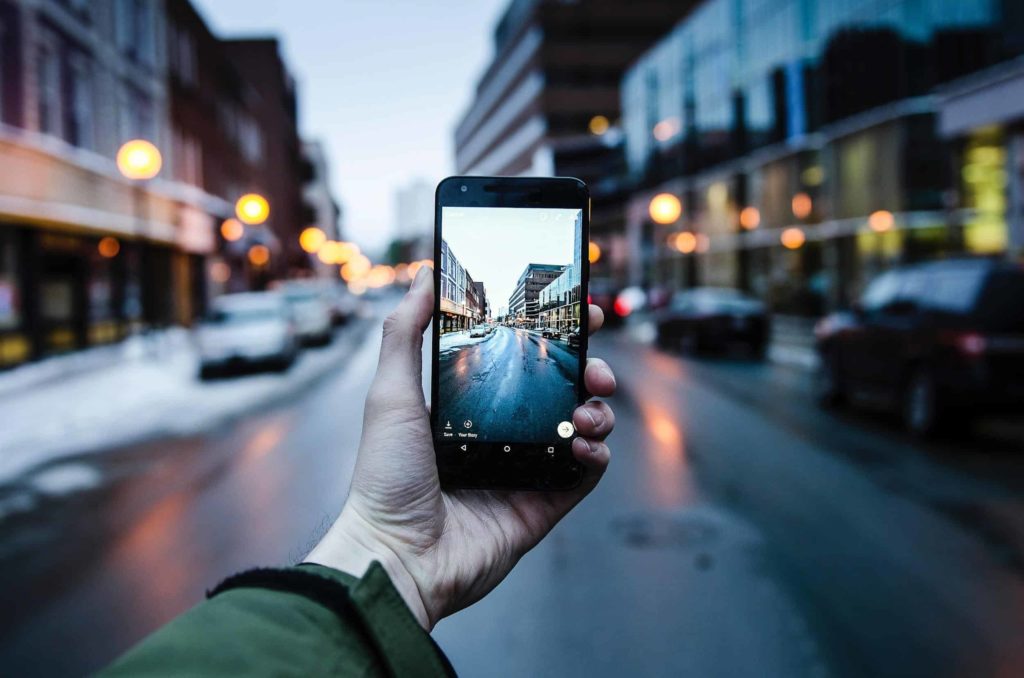The connected consumer is nothing if not radically tech-savvy.
They’re visiting review sites before they make a purchase – even if they’re in a brick-and-mortar store.
They’re checking in to your restaurant on social media – and they want your coupons to find them.
They’re searching for your brand on Google the second they see your social ad – and they want the answers to their questions right now.
In short, today’s connected consumers are more empowered than ever before, and their expectations have risen exponentially as a result. Brands that want to capture this demographic must meet these customers where they are – on their devices – by implementing stellar delivery mechanisms and keeping their technology on point and up-to-date.
The connected consumer demographic is growing – and that growth will only continue
Consider these statistics.
In the U.S. alone:
- 82% of the population now owns a smartphone
- 29% of consumers made an in-store mobile payment in 2017
- 20% of consumers ages 19-49 visit websites from four different devices each week
If you don’t have the technology in place to give these consumers what they want, you’re missing out on a significant potential customer base.
Your tech checklist: What every brand needs
1. A responsive website.
We’ve moved past the days of mobile websites (websites that were built exclusively for mobile). Today, your brand needs a responsive website – one that responds to the size screen you’re using, whether that’s a full-size monitor, a tablet, or a smartphone.
There’s a lot to consider when designing a responsive (also called mobile-first or mobile-friendly) website, but here are a few of the most important points.
Your most important content should be simple to understand and prominently placed. Customers should be able to figure out who you are and what you do as soon as they click on to your homepage, whether they’re on a laptop, tablet, or phone.
The website Skinny Ties, for example, has its core message front and center:
Source: skinnyties.com
Consider every tool a customer might use to interact with your site. The connected consumer could use a keyboard, a stylus, their finger, or a mouse to interact with your site. Are your Call-to-Action (CTA) buttons highly visible and easy to click, no matter what method they’re using? Is your menu easy to navigate?
Condense your images and content for mobile-friendly downloading. Unless your content is truly remarkable, your site visitors won’t wait for a 3-minute download on their phones. Keep your downloads a manageable size for mobile to avoid losing those customers.
2. Location-based data capabilities.
For brands to bridge the online and offline worlds, as the connected consumer has come to expect, they need to be able to use location-based data.
One way this data can be collected is through an app – if a customer downloads your app, you can request access to their location data when the app is open. When they’re near one of your restaurant locations or your retail location, you can send push notifications with coupons or other incentives to visit.
Another way, however, is to employ location-based ad targeting. By targeting your social ads to people who are in a specific place, you can better focus on particular markets – plus, you can use the data you collect from the ad performance to hone your customer targeting even further.
There is one important caveat to remember when working with location-based data. While this data can be helpful in a small way on its own, it should be used in conjunction with other data sets in order to get real results. Serving a customer with an ad simply because they’re near your store, without knowing whether they have any intention to make a purchase, will be ineffective at best and counter-productive at worst.
3. Gated content – or a way for consumers to exchange their data for value.
Lead generation is one of the most important functions of digital marketing for any business, whether B2C or B2B.
It can also be one of the thornier issues a business has to figure out. Quality beats quantity, naturally, but you can’t get a significant number of quality leads without reaching a much larger number of people.
One way to balance this is to employ gated content, in which consumers exchange their data – an email address, most often – for something of value to them.
That value will look different from one company to the next, depending on your industry and niche. For a B2C company, it could be a coupon, or a sneak peek at an upcoming product.
For B2B companies, whitepapers, webinars, and other research/educational content tend to be most popular with potential clients.
The reason this method works for capturing quality leads is that by requiring someone’s personal data, you weed out many people who might click on your content but have no intention of doing business with you. Those who consent to give you their name, occupation, and email, for example, are showing that they have at least some level of interest in your work – and therefore, that it’s possible to convert them.
However, it’s vital that you balance your gated and ungated content in order to get good results. If you have too much gated content, you’ll turn off potential customers (remember, the connected consumer is empowered like never before – if they think you’re asking too much, they’ll simply go elsewhere). If you don’t have enough gated content, you’ll be collecting too many unqualified leads.
4. Email marketing automation.
Email marketing is still critical for building strong relationships with customers. To make it work for you, you’ve got to have a good email marketing automation program – we use MailChimp – that allows you to reach out to customers at the right times with the right message.
Here’s an example.
You capture a lead from a form they filled out on your website.
That person gets a “Thanks for signing up!” email from you immediately after filling out the form.
A few days later, the person receives an email directing them to your latest video.
When the person watches the video, you’re notified so that you can reach out personally to further nurture that lead.
The thing that makes marketing automation so effective – especially for the connected consumer – is that it’s highly personalized. If a lead does X, it triggers Y. If they download your ebook, they get notified when you post a blog post on a similar topic.
This greatly cuts down on the number of emails leads get from your brand and ensures that the ones they do get will actually be relevant to them. In addition, it saves your marketing department loads of time and confusion in trying to figure out who to send which email to.
5. Data management.
In order to offer connected consumers the seamless, omnichannel customer experience they not only want but have come to expect, brands must employ some form of marketing data management – and what’s more, they have to actually use it.
Too much data sits unutilized, or underutilized, in company databases and spreadsheets. By using a marketing data management platform that can tie together data from multiple locations, brands can greatly improve their marketing overall – especially their targeting.
However, a great data management platform won’t do much for you if you don’t have great data to put into it, so ensuring data integrity is a vital part of tackling your data management issues. Filtering your data before it goes into the database, employing a permissions-based system, and performing regular data purges will all help you maintain clean, correct data.
Of course, not all your data needs to be looked at solely through the lens of a complicated data management platform. Some – like your bounce rate, the popularity of certain pieces of content, and other simple indicators of success – can be viewed through a web platform like Google Analytics.
Your future tech checklist: What you’ll need a year from now
Of course, when it comes to technology, it’s not enough to be current. You have to plan for what’s coming down the pipeline, and what the connected consumer will want in the future – say, in the next year to 3 years.
With that in mind, here’s a look at where brands are headed.
1. The Internet of Things
The Internet of Things (IoT) is exploding, with ever more devices talking to each other, talking to us, and gathering information about our health, habits, and location.
While not every brand will be able to integrate the IoT into their marketing and outreach, brands across the board need to realize that many of their customers are integrating – or already have integrated – this reality into their daily lives.
Maybe they’re wearing Fitbits. Maybe they’re using smart appliances. Maybe they’re doing their online ordering using Google Home or Amazon Echo.
How can your brand embrace this progress toward an IoT reality, rather than fight it? Could you create a Home or Echo-enabled app? Could you partner with another brand’s app or a smart device to create something of value for your customers, the way Nike and Apple did to create Nike+?
2. Virtual reality (VR) and augmented reality (AR)
VR and AR are already being used by some of the largest brands, like Marriott, the New York Times, and TOMS Shoes, to give their customers unforgettable experiences.
While VR and AR are still somewhat on the fringe when it comes to marketing technologies, they’re becoming more mainstream with each passing month. Soon enough, these technologies will be within reach for both your average, mid-sized brand and your average consumer.
When that happens, you’ll need to be ready to connect with your customers in this new place where they’re congregating. For consumer-facing brands, that could mean creating avatars connected with your brand for VR games and gathering spots.
For educational or non-profit institutions, that could mean developing informative AR pop-ups to educate your visitors when they’re in your museum, or exploring a festival you’re hosting.
3. Greater customization and personalization
The connected consumer today wants the brands they interact with to know what they like and what they’re interested in.
If a consumer comes to your website to buy inexpensive home decor, they don’t want to see an ad for high-end kitchenware. And thanks to the power of data analytics, you can know exactly what they click on, where they spend their time, and what they purchase.
Next year, and in the years to come, that consumer will want you to know even more about them. They’ll want recommendations for other brands they should follow, ideas for products they should look for in-store, colors of makeup or clothing they should try based on their skin tone and personality.
As our analytics capabilities become more sophisticated, all of this will be easily within reach. It’s just a matter of dedicating the time and effort to learning about your consumers – and then utilizing that data in a way that makes their interaction with your brand more enjoyable and valuable.
Without the right tech, whether now or in the future, you won’t have the necessary delivery tools to develop a bond with the connected consumer.
Once it’s in place, you’ll be ready to address the meatier part of the equation: how to give your customers the kind of brand experiences that will keep them engaged and coming back for more.









